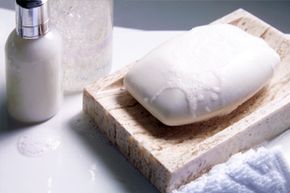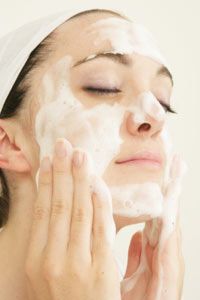Reading the labels on your favorite skin care products can be an alarming experience. Just scanning the endless stream of unpronounceable, chemical-like names among the ingredients can lead to concern about what you're putting on your skin. Sodium cocoate, for example, is a pretty common addition to many types of skin cleansers, but few people actually know what it is and how it helps clean your face.
Despite its somewhat intimidating name, sodium cocoate is actually just the technical term for a simple product made from coconut oil. People produce it through saponification, which is the process of breaking down a fat by combining it with an alkali -- a strong base -- to make soap. You can combine almost any animal or vegetable fat with an alkali -- usually sodium hydroxide -- to make a variety of soaps through saponification. The process produces glycerin and the alkali salts of the fatty acids [source: Myers]. Sodium cocoate is the salt (hence the "sodium" part of its name) formed by breaking down coconut oil (the "cocoate" part) with sodium hydroxide [source: Economic Expert].
Advertisement
So what exactly is this chemical doing in your skin cleanser? Well, aside from its obvious cleansing properties as a soap product, sodium cocoate acts as a surfactant, or a surface-active substance that helps get rid of dirt, oil and other pollutants [sources: Online Ambulance]. It's also less irritating than other types of alkali salts. In fact, it's used so commonly in cleansers because of its nontoxic, all-natural properties [source: Environmental Working Group]. Plus, sodium cocoate is made entirely of vegetable products, unlike sodium tallowate -- another common ingredient in many soaps and cleansers -- that's made using animal lard.
So even though sodium cocoate may sound like a synthetical chemical, it's the product of a natural reaction, and it's made from plant materials. For more information on cleansing and caring for your skin, check out the links on the following page.
Advertisement


